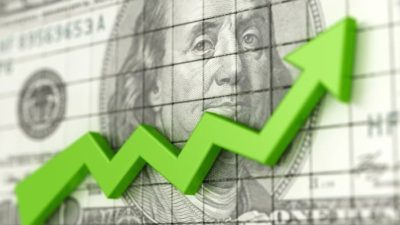This article was originally published on Fool.com. All figures quoted in US dollars unless otherwise stated.
Across the board, AI stocks had a difficult 2025. Some companies have lost hundreds of billions of dollars in value over the first three months of the year.
But in the long term, the AI revolution looks stronger than ever. A decade from now, or even just a handful of years from now, demand for AI services will be considerably higher. And that makes Nvidia (NASDAQ: NVDA) a promising AI stock and a strong buy.
This is still the most promising AI stock
When it comes to AI stocks, Nvidia is king. If you have monitored the space at all, you're likely very familiar with the company's growth prospects.
Nearly every AI technology relies on heavy training and distributed computing power to function. The components that make this possible are called graphics processing units (GPUs). And when it comes to GPUs for AI technologies, Nvidia dominates with a market share of at least 70%. In areas like data centers -- crucial infrastructure that makes the AI revolution possible -- its market share is even higher.
By betting on its stock, you're essentially exposing your portfolio to ground zero of the AI industry. In order for AI to continue advancing, the industry will continue to rely on the company's chips.
Despite their higher price point, Nvidia chips are simply far superior to anything the competition has to offer. A lot of this has to do with Nvidia's early investment in the space. But it also stems from the 2006 introduction of CUDA, the company's proprietary parallel computing platform that allows developers to fine-tune its chips for specific tasks. This not only created performance benefits over time, but also customer lock-in.
As developers used CUDA more, customizing their environments to adapt to its potential benefits, their own products and services became entrenched into Nvidia's ecosystem, creating a level of stickiness that keeps customers coming back for its chips each year.
Despite a historic rise in recent years, Nvidia shares have experienced a rare drop so far in 2025, falling by nearly 20%. Could this be your chance to buy into this long-term AI superstar at a discount?
Should you buy Nvidia shares after the drop?
It is incredibly difficult to value a stock like Nvidia. Sales are growing by leaps and bounds, but most of its growth is likely still ahead of it.
And what exactly the AI industry will look like a decade from now -- nonetheless how large it will get or how quickly that growth will transpire -- is largely anyone's guess. But we can glean some clues by comparing Nvidia with another large chipmaker with AI aspirations: Advanced Micro Devices, colloquially referred to as AMD.
NVDA PS Ratio data by YCharts; TTM = trailing 12 months.
Nvidia's valuation has come down from its highs set in 2021 and 2024, at least in terms of its price-to-sales ratio (P/S). You can also see that Nvidia's fall in 2025 isn't unique. Other chipmakers, such as AMD, also saw their valuations trimmed.
And while Nvidia shares are priced three times higher than AMD's on a price-to-sales basis, its growth next quarter is expected to be more than double, while its increases in 2023 and 2024 were truly impressive.
Still, there's no doubt that Nvidia shares are expensive at 21.6 times sales, especially given the company's market cap of nearly $3 trillion. And although its current product lineup is priced at a premium versus the competition, that may not always be the case. Rivals AMD and Intel are investing heavily to catch up in chip performance, and there's even the possibility that the companies merge to better take on Nvidia in the long term.
For now, investors bullish on AI should consider taking a diversified approach. Nvidia looks like a great purchase for patient investors willing to sit through the volatility.
But don't forget that the AI revolution likely won't be built on a single company's products. Competition will emerge, and diversifying with other publicly traded chipmakers can help your portfolio bet on the rise of AI in general, versus the prospects of one business in particular.
This article was originally published on Fool.com. All figures quoted in US dollars unless otherwise stated.










